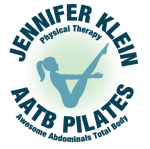What is Degenerative Joint Disease?
Degenerative Joint Disease (DJD), more commonly known as osteoarthritis, is characterized by degenerative bony changes such as bone spurring between the vertebra, narrowing of the nerve outlets, or fusion of the vertebra. Joints, which are the points in the body where two bones meet, are what facilitates movement and provides stability to the musculoskeletal system. Within the joints, areas of cartilage support nearby bones by adding a cushioning of sorts and preventing them from grinding against one another. Joints bear a significant amount of the body’s weight and are regularly strained as an individual goes about their everyday activities. For this reason, joints are highly susceptible to gradual deterioration and injury.
Symptoms of DJD vary from non to severe. Often the first symptoms are stiffness or soreness in the joint which worsens with inactivity but improves with movement. If the degeneration of the joint is severe, it can lead to pain in certain ranges of motion or put pressure on a nerve causing radiculopathy or nerve impingement. This pain may stem from bones jarring against each other, from nerves being pressed, or from muscular compensations caused by protecting the body from pain or from limited ranges of motion. Other symptoms include:
- Localized swelling, redness and tenderness
- Limited mobility, including particular trouble with using eating utensils, getting in and out of chairs, dressing or putting on shoes
- Bone spurs
- A grating sensation when trying to move a joint
How can Pilates-Integrated Physical Therapy Help?
Treatment will vary based on the nature of symptoms. For example, for those experiencing nerve pain, exercises will be similar to those used to treat disc injuries. For those without nerve pain, exercises encouraging a full range of motion are considered. The Pilates reformer is an effective tool because joint compression and weight bearing exercises should be avoided. In addition, exercises focusing on core strengthening and pelvic stabilization can help decompress the bones that may be putting pressure on each other.


Recent Comments